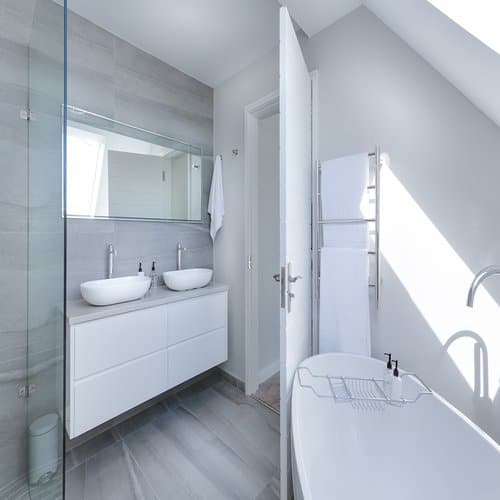How do you identify leaks in the shower? Leaks in the shower are often discovered by these symptoms: damp/ wet carpet or timber flooring, swelled up plaster, peeling paint, cracked tiles and mold that develops adjacent to the shower area. These are all considered obvious signs that there might be a leak in the shower that needs to be fixed. Source of leaks in the shower can be pretty straightforward to somewhat complex, thus it is important to immediately contact your waterproofing contractor for a check.
Leaks in the shower ceiling is a very common problem in HDBs and Condominiums in Singapore. Such leaks can be quite an eyesore and challenging to solve as it involves the unit located directly above yours, thus, more planning and arrangements would be required. In this age of high-rise apartments, it is common and somewhat inevitable that your apartment will experience a water leakage someday, especially for older apartments.
So, how do you spot such leaks in the shower? Its not that tough to spot a leak in the shower ceiling. Yellowish damp patches and peeled of paint job are usually associated to a ceiling leak. For serious cases, you might even spot droplets of water. High Pressure PU Injection Grouting can solve this leakage. This method is an injection of liquid grouting material into the structure under pressure. During the grouting process, fissures (an opening or line of breakage made by cracking or splitting in structures) and pores are filled with the grouting material, which subsequently hardens and connects the disintegrated surfaces. PU injection grouting can help to fill the cracks fully as once the injection is administered, the foam expands to fill in the entire space of each crack. This fullness gives full coverage and protection from any water seepage. This process is to be done on the affected ceiling, which is the unit downstairs.
Some other common causes and solutions are:
Joints between wall and shower
Tiled walls
Floor tiles
Joints between wall and shower – The joints between the shower and the walls is a common area where water leakage occur. Such leaks can occur when there are movements in the shower tray. Overtime, the constant movements will cause the silicon sealant to wear off or deteriorate. When this occurs, the best way to rectify it would be remove the faulty silicone with a craft scalpel, clean the area thoroughly and wait for it to be completely dry before applying new silicone sealant.
Tiled walls – A shower water leakage can also be caused by tiles. The cause of this problem is pretty straightforward which is the tile grout. Standard powdered grout is not waterproof as it is slightly porous and allows moisture to be absorbed. More ideally, epoxy grout should be applied in showers. The solution would be to rake out existing faulty grout and re-apply a waterproof formulation, followed by sealing up the finished grout with a grout sealer.
Floor tiles – As mentioned earlier, this is the most common cause for ceiling leakages. Similar to tiled walls, floor tiles usually cause leaks when the grouts have worn off. For this problem, owners can opt for clear penetrative waterproofing treatment, a penetrative waterproofing chemical solution that is specially made for a non-invasive, no drilling and effective approach to waterproof and ensure water tightness of substrates. The chemicals can penetrate and react with the substrates to create a waterproofed layer and prevent water ingress on the floor tiles.
If you are experiencing a leak in the shower, do not hesitate to contact us at +65 8754 4058 for a complimentary inspection today!



